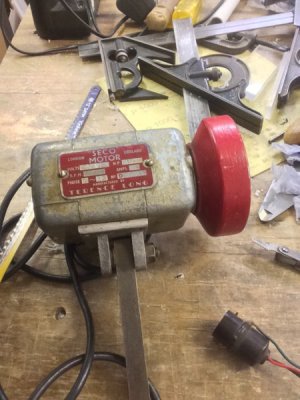- Joined
- Dec 23, 2016
- Messages
- 33
hello everyone!
My little old lathe is almost there!
Over the weekend iv been adjusting my spindle alignment, its nice and true now but after chucking up a bit of scrap it's still out of wack by a fair bit! Iv disassembled and cleaned the chuck and it's exactly the same so I'm going to grind the jaws.
The old man who started the company I work for has loaned me his very very old tools post grinder. Will post some pics when iv finished lunch! Anyway he can't find the part for grinding the internal jaws. I very much doubt I'll find an attachment so I suppose I'll be turning one. Iv got loads of silver steel to hand, would that work for what I want?
Does anyone one have any pointers for me?
Thanks!
My little old lathe is almost there!
Over the weekend iv been adjusting my spindle alignment, its nice and true now but after chucking up a bit of scrap it's still out of wack by a fair bit! Iv disassembled and cleaned the chuck and it's exactly the same so I'm going to grind the jaws.
The old man who started the company I work for has loaned me his very very old tools post grinder. Will post some pics when iv finished lunch! Anyway he can't find the part for grinding the internal jaws. I very much doubt I'll find an attachment so I suppose I'll be turning one. Iv got loads of silver steel to hand, would that work for what I want?
Does anyone one have any pointers for me?
Thanks!


